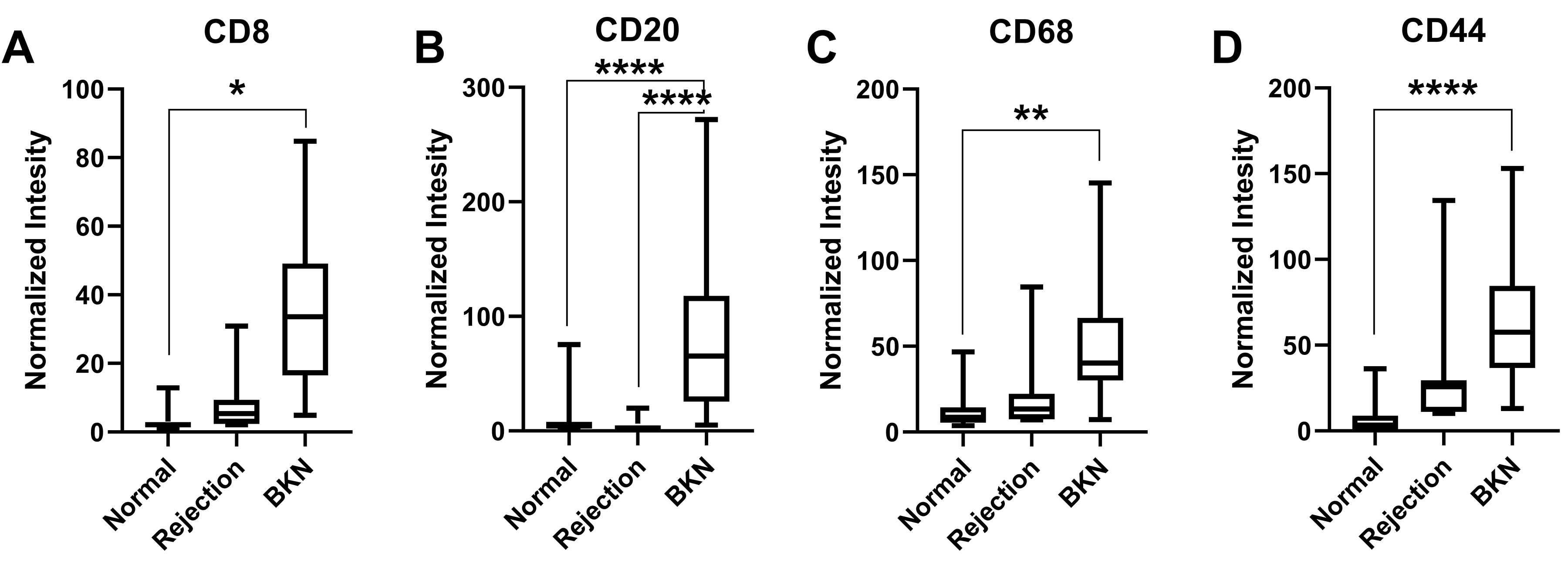Dissecting the Intrarenal Immune Response to Viral Infected Cells in Pediatric BK Virus-associated Nephropathy (BKVAN)
1Pediatric Nephrology, Seattle Children's Hospital & Research Institute, Seattle, WA, 2Pediatric Nephrology, 2St. Louis Children’s Hospital, Washington University School of Medicine, St. Louis, MO
Meeting: 2021 American Transplant Congress
Abstract number: 806
Keywords: CD20, Image analysis, Kidney transplantation, Polyma virus
Topic: Clinical Science » Infectious Disease » Kidney: Polyoma
Session Information
Session Name: Kidney: Polyoma
Session Type: Poster Abstract
Session Date & Time: None. Available on demand.
Location: Virtual
*Purpose: BKVAN is not only a cause of acute renal allograft injury but is a recognized cause of chronic allograft disease and in some patients, allograft failure. Currently, there is little understanding of the intrarenal mechanisms involved in the resolution of BKVAN. To better understand these pathways, we investigated the intrarenal immune responses to BKV infected tubular cells.
*Methods: We examined the course of three pediatric patients diagnosed with BKVAN: one progressive BKVAN leading to graft failure and two BKVAN with resolution of BK viremia, but with either new donor-specific antibodies (DSA) or new interstitial fibrosis/tubular atrophy (IFTA). Each patient had an initial biopsy prior to the diagnosis of BKVAN: two normal and one with Banff 1A rejection. Using digital spatial profiling with the human IO TAP panel v2 on the Nanostring GeoMX DSP, we identified regions of interest (ROI) with BK polyoma infected tubular cells in BKVAN biopsy samples and compared it with normal tubular ROI from baseline biopsy, n=8-12 ROI/biopsy. Signal intensities from equal area ROIs were normalized to host antibody levels (rabbit and mouse).
*Results: Digital spatial profiling identified many upregulated proteins with significant differences between normal (n=24), rejection (n=12), and BKVAN biopsy groups (n=32) (P<0.0001). As expected, CD8 levels were approximately 13 times higher in BKVAN compared to normal (Figure 1A; P=0.012). There was a significant increase in CD20 levels (7.8-fold) that distinguished BKVAN from normal and rejection kidneys (Figure 1B, P<0.0001). Furthermore, activated macrophage markers such as CD44 and CD68 not only distinguished BKVAN from normal kidneys (Figure 1C,D, P<0.0001 and P=0.002, respectively) but also was associated with progressive BKVAN (P<0.01).
*Conclusions: Although this study is limited by the low number of patients, it more accurately represents the intrarenal immune microenvironment of BK infected tubular cells compared to whole tissue investigations and needs further study. These results represent the first step to devise improved treatment strategies.
To cite this abstract in AMA style:
Okamura DM, Jackson SW, Dharnidharka VR, Smith JM. Dissecting the Intrarenal Immune Response to Viral Infected Cells in Pediatric BK Virus-associated Nephropathy (BKVAN) [abstract]. Am J Transplant. 2021; 21 (suppl 3). https://atcmeetingabstracts.com/abstract/dissecting-the-intrarenal-immune-response-to-viral-infected-cells-in-pediatric-bk-virus-associated-nephropathy-bkvan/. Accessed December 29, 2025.« Back to 2021 American Transplant Congress

